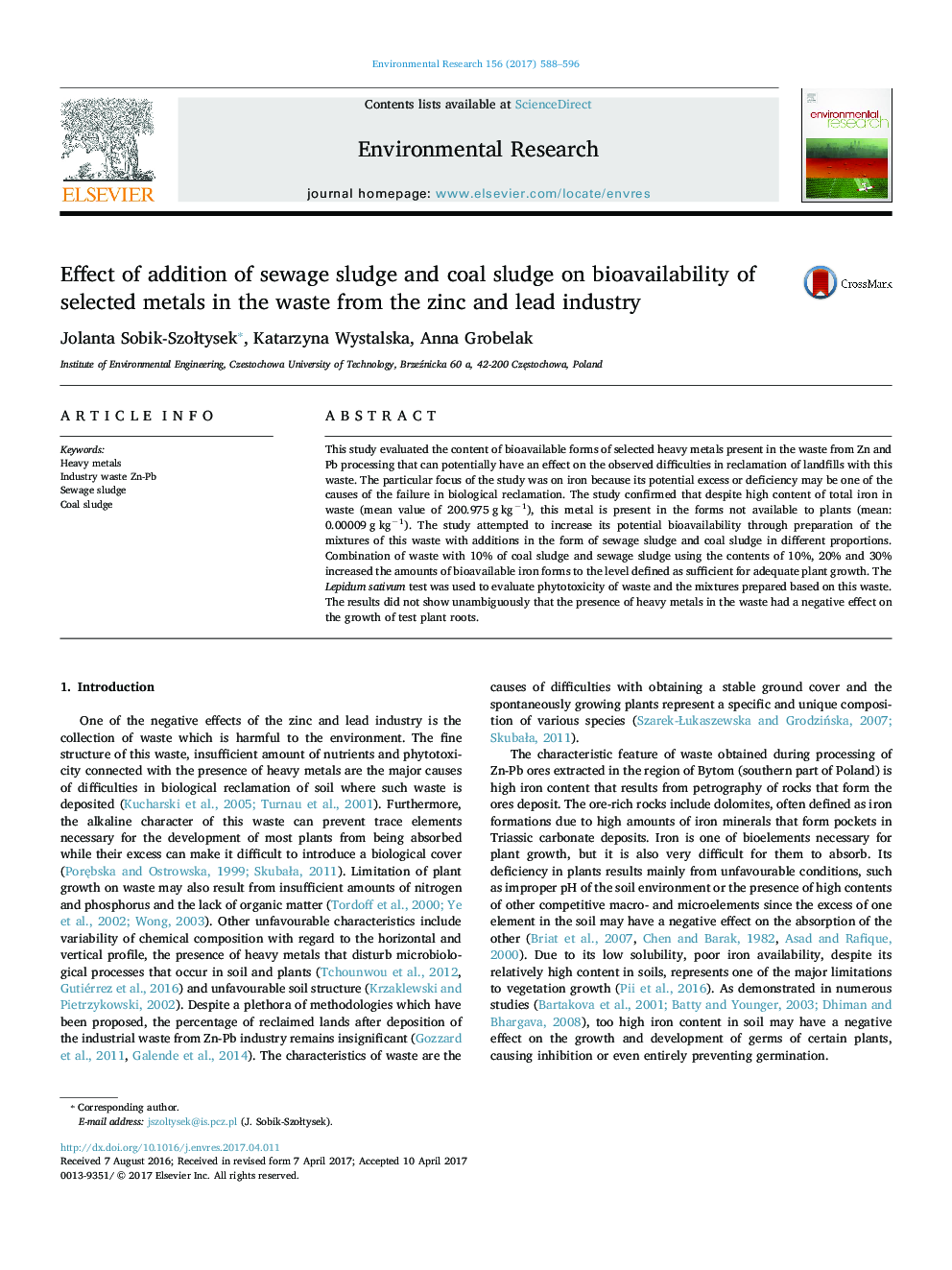| کد مقاله | کد نشریه | سال انتشار | مقاله انگلیسی | نسخه تمام متن |
|---|---|---|---|---|
| 5756530 | 1622547 | 2017 | 9 صفحه PDF | دانلود رایگان |
عنوان انگلیسی مقاله ISI
Effect of addition of sewage sludge and coal sludge on bioavailability of selected metals in the waste from the zinc and lead industry
ترجمه فارسی عنوان
اثر افزودن لجن فاضلاب و لجن زغال سنگ بر قابلیت های زیستی فلزات انتخاب شده در زباله ها از صنعت روی و سرب
دانلود مقاله + سفارش ترجمه
دانلود مقاله ISI انگلیسی
رایگان برای ایرانیان
کلمات کلیدی
موضوعات مرتبط
علوم زیستی و بیوفناوری
علوم محیط زیست
بهداشت، سم شناسی و جهش زایی
چکیده انگلیسی
This study evaluated the content of bioavailable forms of selected heavy metals present in the waste from Zn and Pb processing that can potentially have an effect on the observed difficulties in reclamation of landfills with this waste. The particular focus of the study was on iron because its potential excess or deficiency may be one of the causes of the failure in biological reclamation. The study confirmed that despite high content of total iron in waste (mean value of 200.975 g kgâ1), this metal is present in the forms not available to plants (mean: 0.00009 g kgâ1). The study attempted to increase its potential bioavailability through preparation of the mixtures of this waste with additions in the form of sewage sludge and coal sludge in different proportions. Combination of waste with 10% of coal sludge and sewage sludge using the contents of 10%, 20% and 30% increased the amounts of bioavailable iron forms to the level defined as sufficient for adequate plant growth. The Lepidum sativum test was used to evaluate phytotoxicity of waste and the mixtures prepared based on this waste. The results did not show unambiguously that the presence of heavy metals in the waste had a negative effect on the growth of test plant roots.
ناشر
Database: Elsevier - ScienceDirect (ساینس دایرکت)
Journal: Environmental Research - Volume 156, July 2017, Pages 588-596
Journal: Environmental Research - Volume 156, July 2017, Pages 588-596
نویسندگان
Jolanta Sobik-SzoÅtysek, Katarzyna Wystalska, Anna Grobelak,
